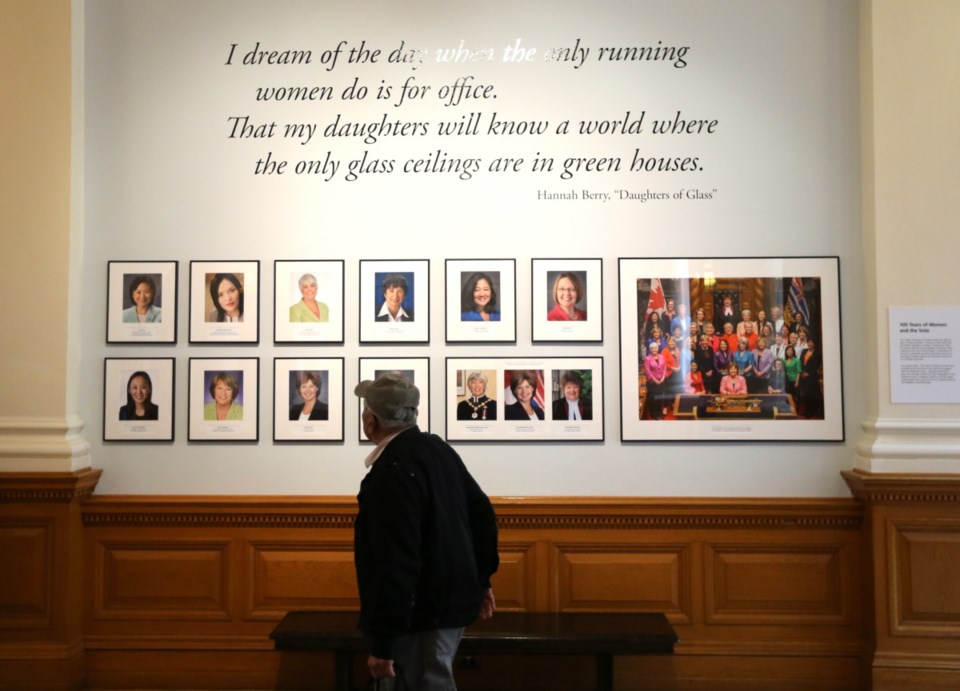Langford’s Nicole Johnston represents the federal riding of Cowichan-Malahat-Langford in theory for now — but tomorrow it could be the real thing.
Johnston is one of 42 women aged 18 to 23 selected from B.C.’s federal ridings as part of a Canada-wide initiative called Daughters of the Vote. It’s designed to encourage young women to become politically engaged and enter politics.
“I have so much hope looking at the mandate of our [Liberal government] and Prime Minister Justin Trudeau’s statements about being a feminist … and so many premiers across the country being female,” Johnston said.
“I think it will show my generation and the younger generation that we can grow up to be as politically active as we want to be.”
But gender inequality remains very real, Johnston said.
Just 26 per cent of seats in the House of Commons are held by women. In the B.C. legislature, they make up 37 per cent of MLAs.
Daughters of the Vote is an initiative by Equal Voice, a national, multi-partisan organization dedicated to seeing more women elected to all levels of political office in Canada. It is tied to Canada’s upcoming 150th anniversary celebrations and the 100th anniversary of the first provinces granting women the right to vote.
As part of Women’s History Month, Daughters of the Vote delegates will be at the legislature on Monday as a permanent exhibit marking a century of the women’s vote is unveiled.
Next year, they will travel to Ottawa for a special leadership conference. The goal, according to the group, is to make sure the women become familiar with Canada’s political institutions and inspire them to participate in the political sphere.
Johnston, 19, studies international development and political science at the University of Ottawa.
She started out interested in youth engagement, the environment, mental health and child poverty, but soon realized politics was a way to address these issues.
“I started to see there were a lot of gender inequalities and it started to weigh heavy on my heart,” she said.
Some men in her class talked about women being unwise to work while having children and not having the same “charisma” as men for a life in politics.
“Before, I was passionate about social issues … now my cause has really become gender representation in politics,” Johnston said.
“I see so many girls who don’t feel empowered to get into politics and I realized it was something I had to advocate for if I wanted girls’ voices heard in the future.”
Teanna Noel Ducharme, 21, from the Nisga’a Nation represents the riding of Skeena-Bulkley Valley in northern B.C.
The galvanizing experience for her was the issue of the missing and murdered indigenous women.
“Growing up so close to the Highway of Tears … I thought someone has to go advocate for these women’s rights and say these lives matter,” said Ducharme, an intern with the B.C. Ministry of Children and Family Development. “That was the real driver behind my work.”
“I’m so very excited, especially to be an indigenous woman from B.C. and the north, to be able to represent my territory and my community and my province,” she said. “It is such an honour.”
For more information, go to daughtersofthevote.ca.
Women and politics
• Provinces started granting women the vote in 1916. Quebec was the last province to grant women the right to vote, in 1940. Aboriginal women and women of Asian descent were granted the vote later.
• The right to vote was enshrined in the Charter of Rights and Freedoms in 1982.
• Women make up about 50 per cent of the Canadian population but only 26 per cent of members of Parliament.
• Women’s representation in provincial and territorial legislatures ranges from nine to 37 per cent.
• Canada has had only one female prime minister: Kim Campbell, who served for less than a year in 1993.
• Canada’s first female cabinet minister was appointed in 1957.
• Canada’s first female Speaker of the House of Commons was elected in 1980.
— Source: Daughters of the Vote



